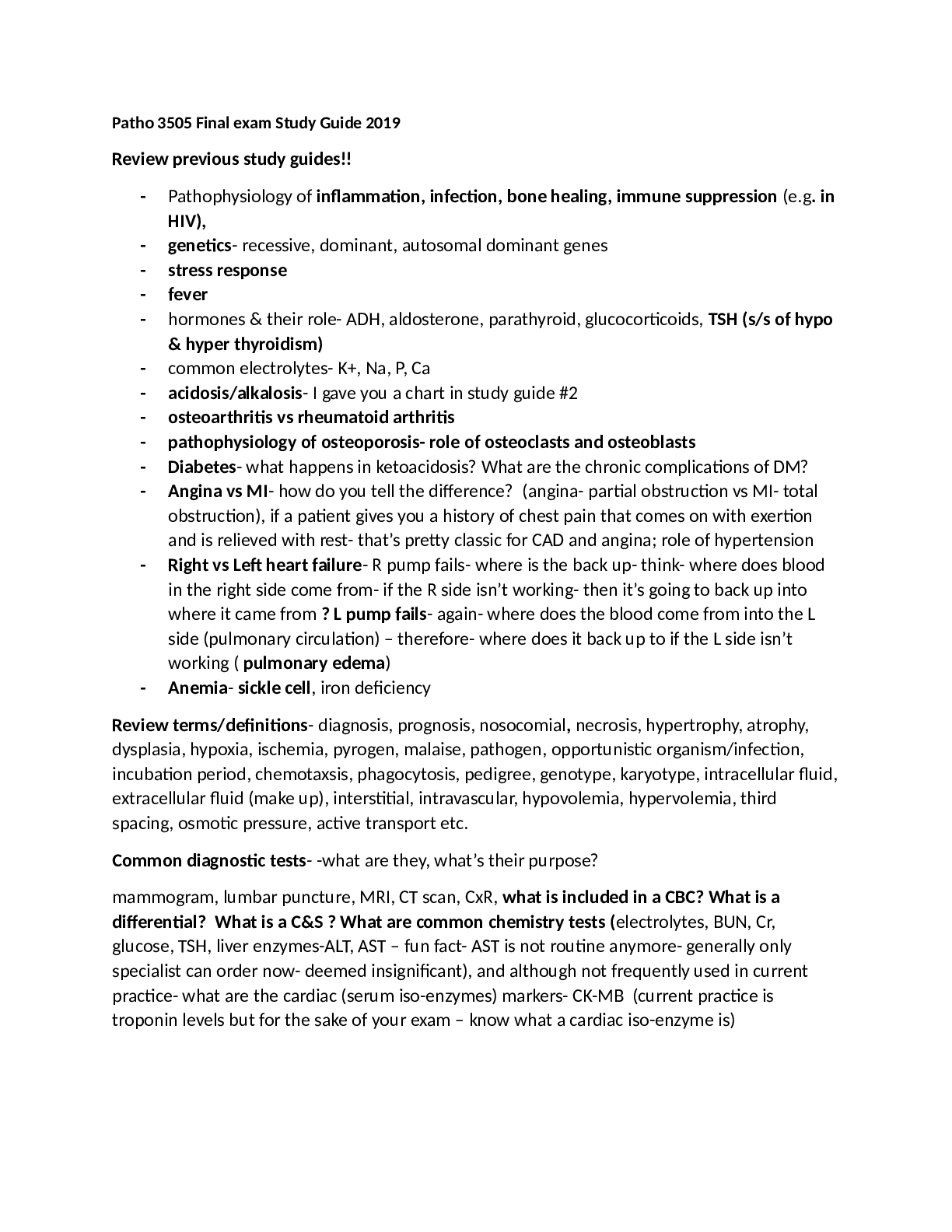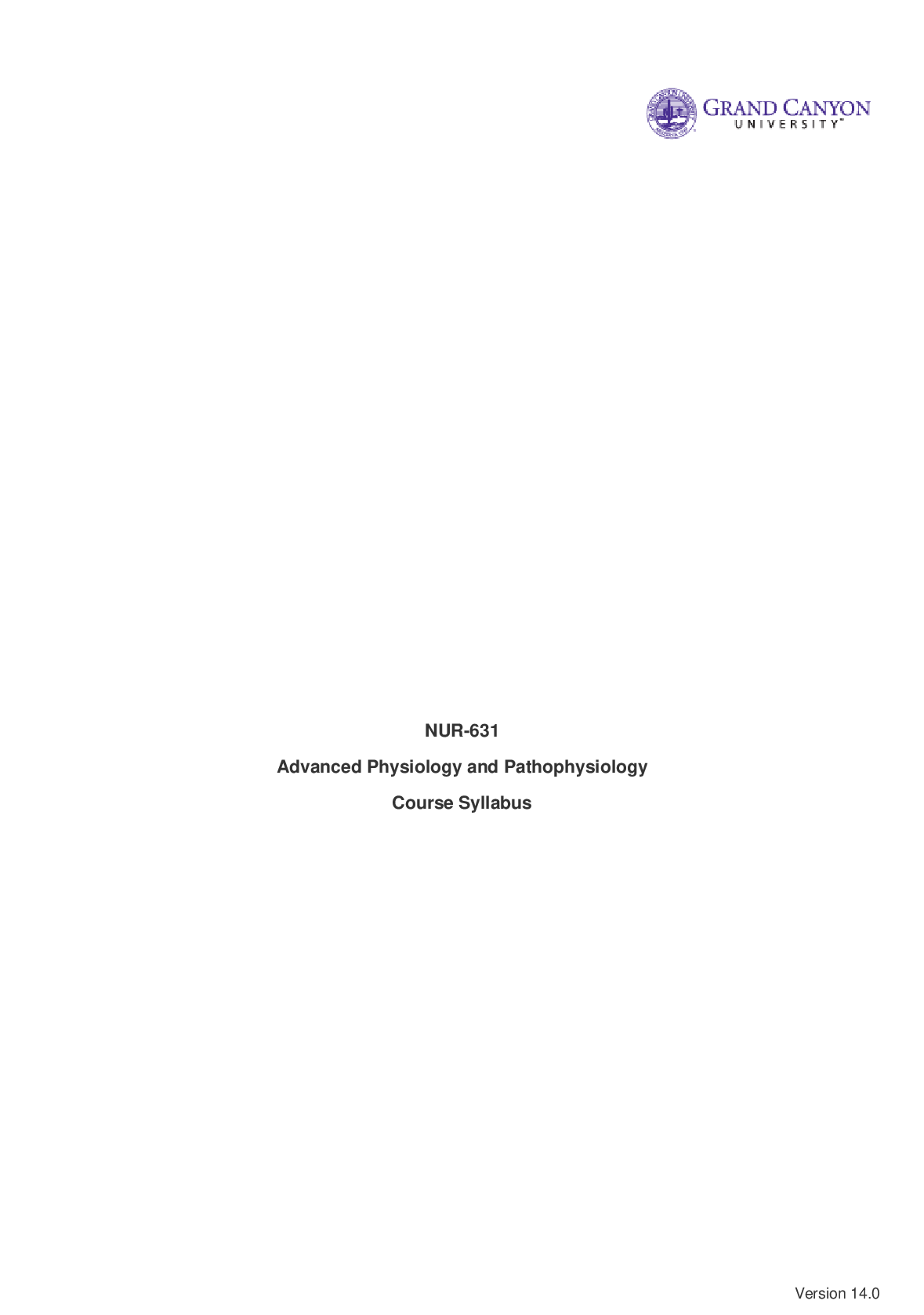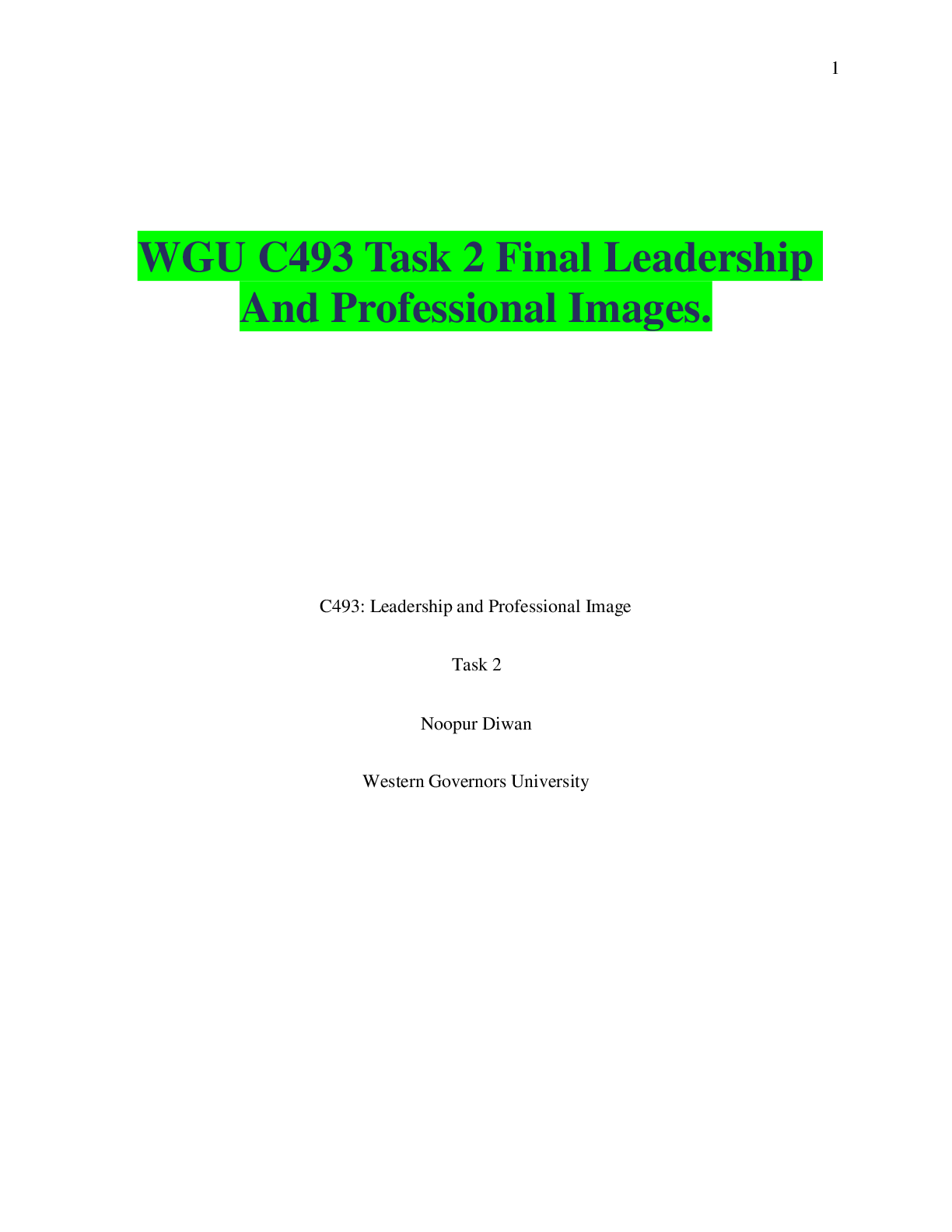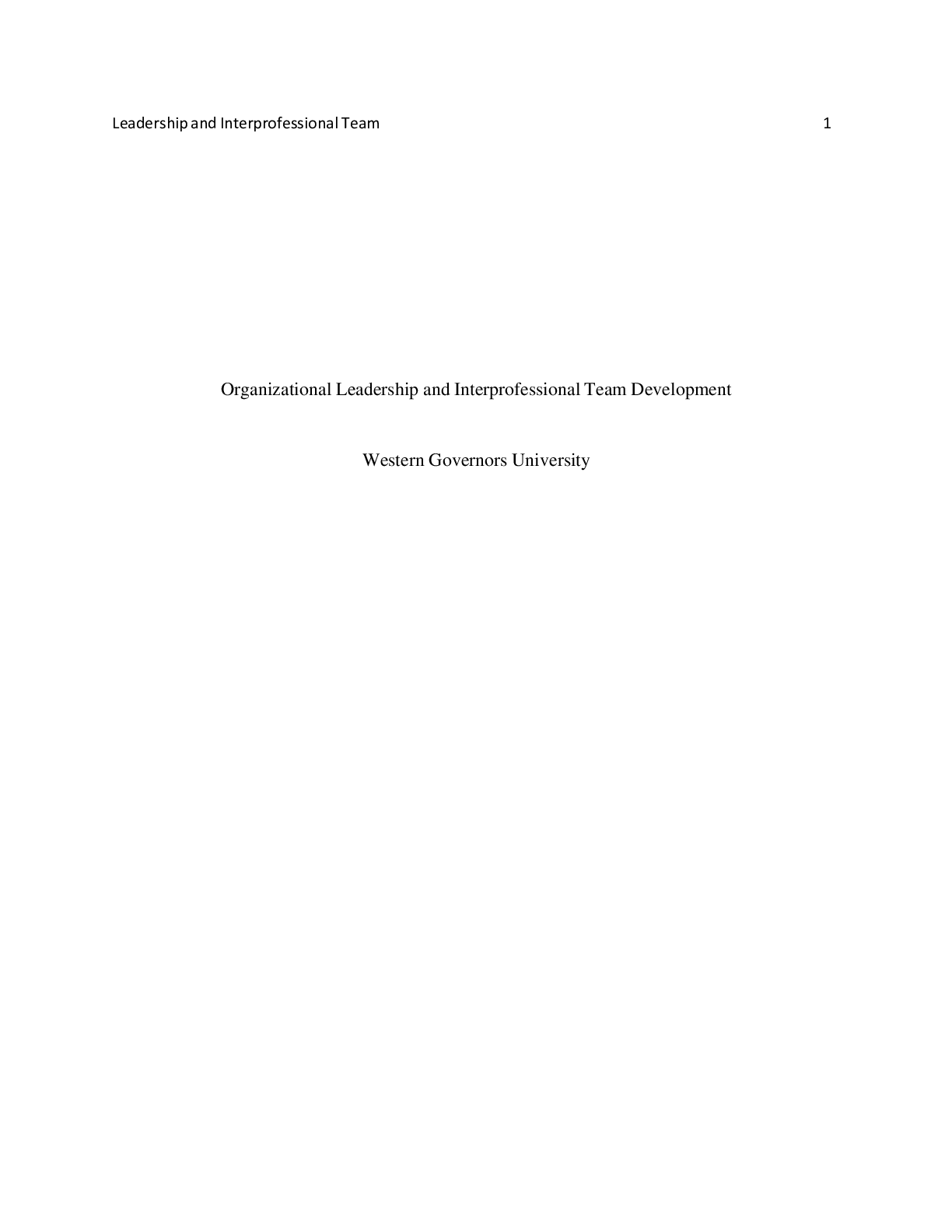Pharmacology > STUDY GUIDE > Pharmacology Lecture 1 WITH questions and answers (All)
Pharmacology Lecture 1 WITH questions and answers
Document Content and Description Below
Pharmacology Lecture 1 Chapter 9 ● The Nursing Process ○ A systematic, rational method of planning and providing nursing care ○ Purpose is to identify actual or potential health problems �... � Establish plans to meet identified needs ○ Deliver specific nursing interventions to address needs ○ Evaluate the success of interventions ● There are five components of the nursing process ○ Assessment: gather data to identify current health issues and have initial baseline ■ Subjective: health history information by patient or family such as pain assessment ■ Objective: physical exam and lab values by healthcare professionals such as vital signs, complete blood count (CBC), diagnostic X-ray etc. ■ Medication: therapeutic effects, adverse, and toxicity including over the counter (OTC) drugs and traditional folk or herbal medicines. ● including their diet ○ Nursing Diagnosis ■ Clinical judgment of actual or potential health problem ■ Nursing diagnosis ≠ Medical diagnosis ● minimize side effect, maximize knowledge ■ Prioritizes level of importance and immediacy to patient’s clinical condition ■ North American Nursing Diagnosis Association (NANDA) provides a list of standard wording ■ Addresses 3 main areas of concern: (1) promote therapeutic effect, (2) minimize adverse effects and toxicity, (3) maximize self-care and knowledge ○ Planning with goals and outcomes (care plan) ■ In the planning phase, the nurse creates an individualized plan of care for a patient based on the identified nursing diagnosis and etiologies ■ Planning includes to prioritize diagnosis, formulate desired outcomes (goal or achievement) and select nursing interventions ■ Promotes evidence-based nursing practice ○ Implementation (Intervention) ■ Puts nursing care plan into action ● what time does the patient need the medication ● documentation is pertinent ■ Knowledge, skills and principles applied to achieve desired outcome ■ Involves drug administration based on interventions ■ Includes patient teaching and documentation ■ 5 rights of medication administration ● Right patient ● Right drug ● Right dose ● Right time ● Right route ■ Drug Errors ● Preventable events to impact treatment outcomes ● Drug errors injury more than 1.5 million a year ● Involve patient, nurse, pharmacist, physician. ○ and families ● Read Chapter 5 ○ Evaluation ■ In Evaluation phase, the nurse obtains data to determine if the goal or outcome has been achieved ■ Compares current health status with desired outcomes ■ Determines if plan of care appropriate or modification needed ■ Determines drug efficacy or adverse events ● assess patient after medication is given (1-2 hours) to check for therapeutic effect ● Questions ○ Nurse reviews a client record for drug allergies, current medications, and disease status. Which phase of nursing process? ■ Assessment ● Drug Nomenclature ○ All drugs have at least three names ■ Chemical name 2 (p-isobutylphenyl) propionic acid ■ Generic name - Ibuprofen ■ Trade name (Brand name) - Motrin/Advil ● Your assignment ○ Look in your drug handbook and find three names for the following drugs ■ Diphenhydramine - Benadryl, Nytol, Allermax ■ Acetaminophen - Tylenol, Tempra,Q-Pap ■ Naproxen - Aleve, All Day Relief, Anaprox ■ Fexofenadine - Allegra, Allergy Relief, GNP Allergy Relief ● Adverse effects = Side effects ○ Undesirable ○ Potentially harmful ○ can occur at therapeutic or normal doses ○ All prescriptions, OTCs, herbal, supplements have potential ■ Some drugs can cause blood dyscrasias. This is a condition in which there is a decreased production of erythrocytes, leukocytes, and/or platelets ● not enough erythrocytes - SOB/tired ● less leukocytes - higher risk of infection ● less platelets - easy bleeding and bruising ● Side effects = adverse effects ○ Predictable/anticipated ○ Distinguished from adverse effects by severity ○ Nurse teaching includes common side effects to predict ■ Nausea is one of the common side effects of Demerol. ■ Diphenhydramine, an antihistamine, is sometimes given as a sleep aid because drowsiness is a common side effect. ● Specific types of reactions ○ Paradoxical reactions have the opposite of the intended effects. ○ Idiosyncratic reactions are uncommon drug reaction often caused by genetic differences. ○ Hypersensitivity (allergic) reactions are due to the stimulation of the immune system by the drug. ○ Toxic reactions occur when the patient is overdosed with the drug. ● Allergy/Hypersensitivity reactions ○ The body recognizes the drug as a foreign invader, ○ Histamine and cellular mediators responded and released by the body. ○ Allergy/hypersensitivity reactions occurs, such as hives/rashes, swelling of the body, dangerous when it happens to throat ● Toxicity ○ The drug is acting as a poison or toxin. ■ Nephrotoxic (kidney) ■ Cardiotoxic (cardiac muscle/heart) ■ Neurotoxic (neuron) …………………………………………………………..CONTINUED…………………………………….. [Show More]
Last updated: 2 years ago
Preview 1 out of 55 pages
.png)
Buy this document to get the full access instantly
Instant Download Access after purchase
Buy NowInstant download
We Accept:

Reviews( 0 )
$15.00
Can't find what you want? Try our AI powered Search
Document information
Connected school, study & course
About the document
Uploaded On
Jan 21, 2021
Number of pages
55
Written in
Additional information
This document has been written for:
Uploaded
Jan 21, 2021
Downloads
0
Views
74

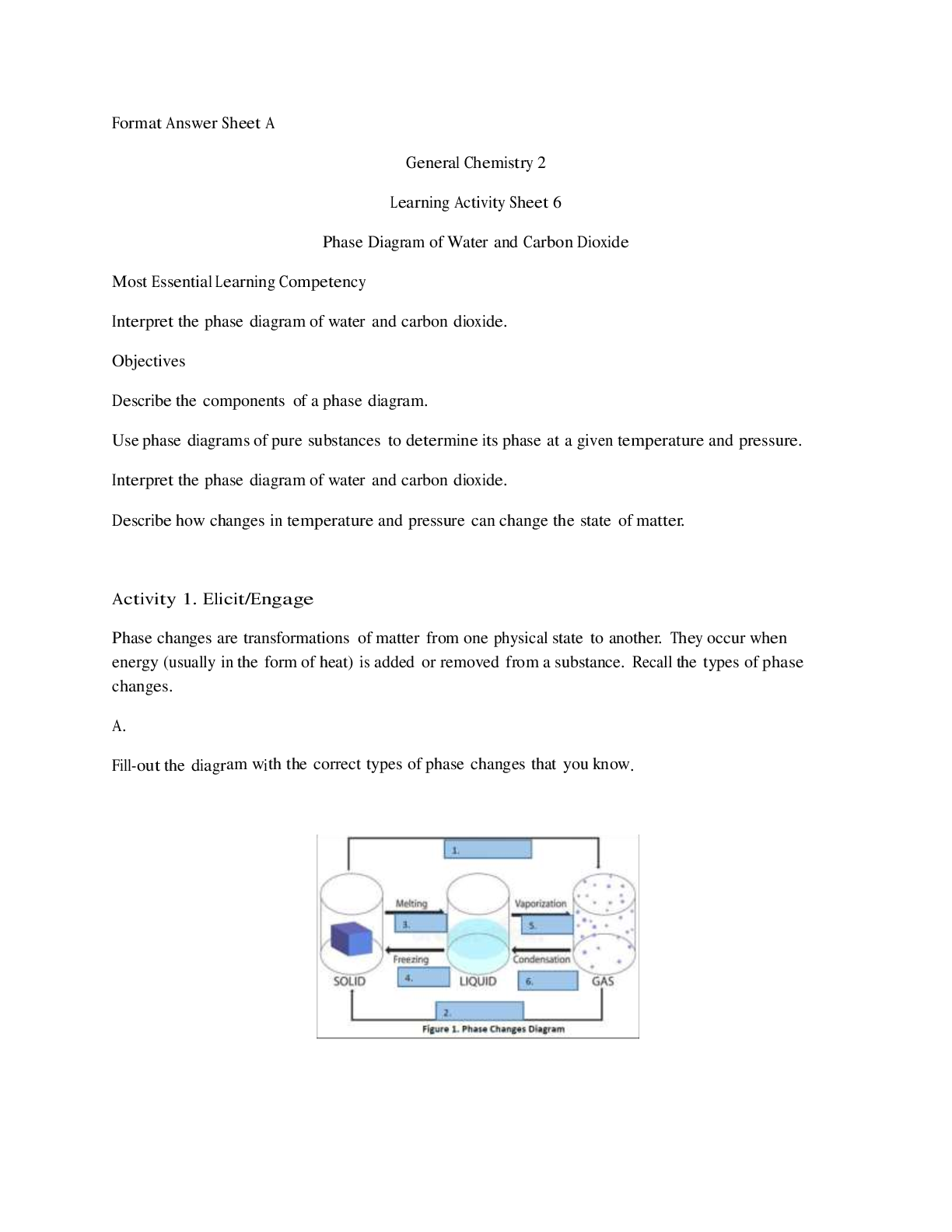

.png)


